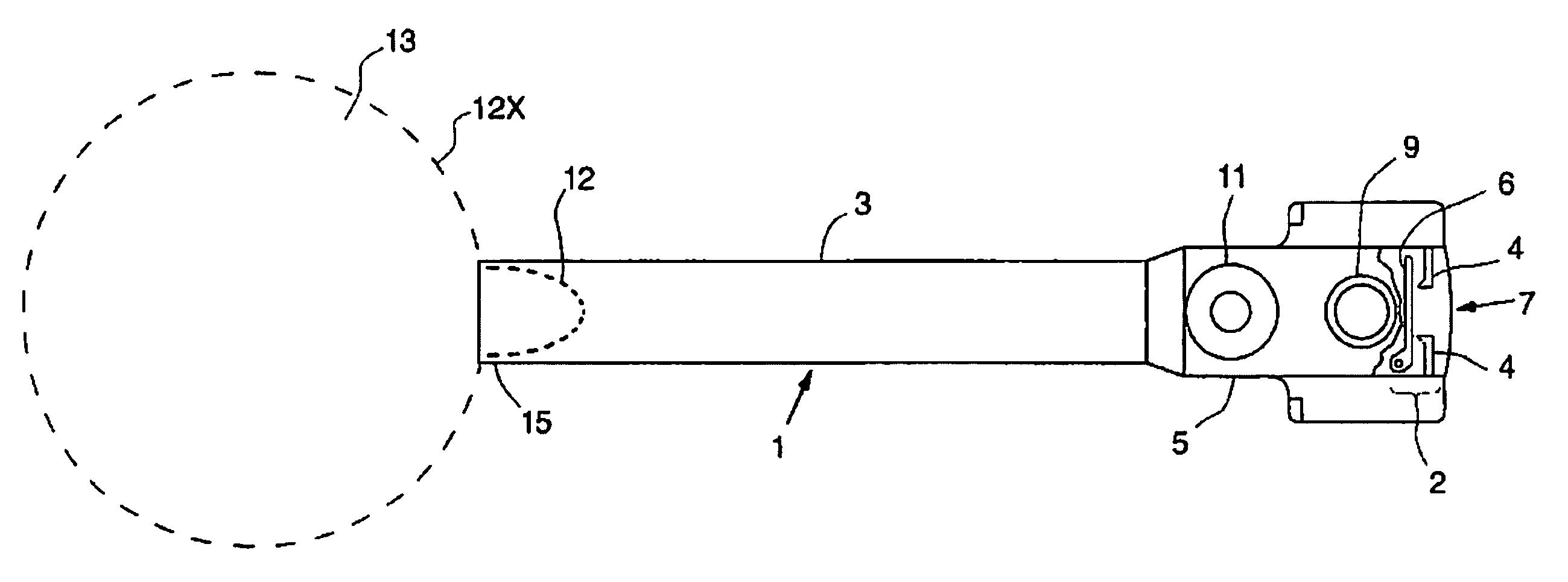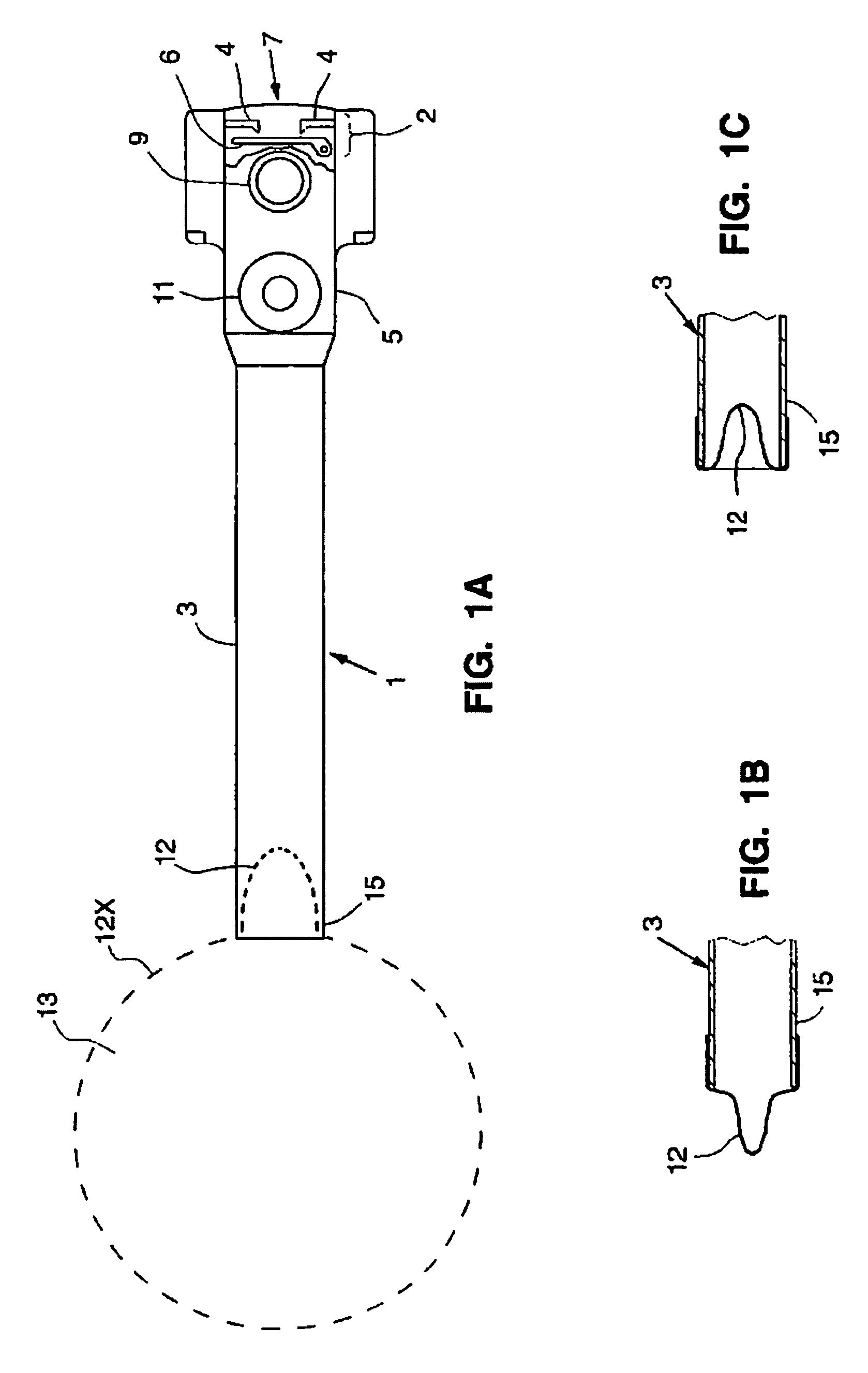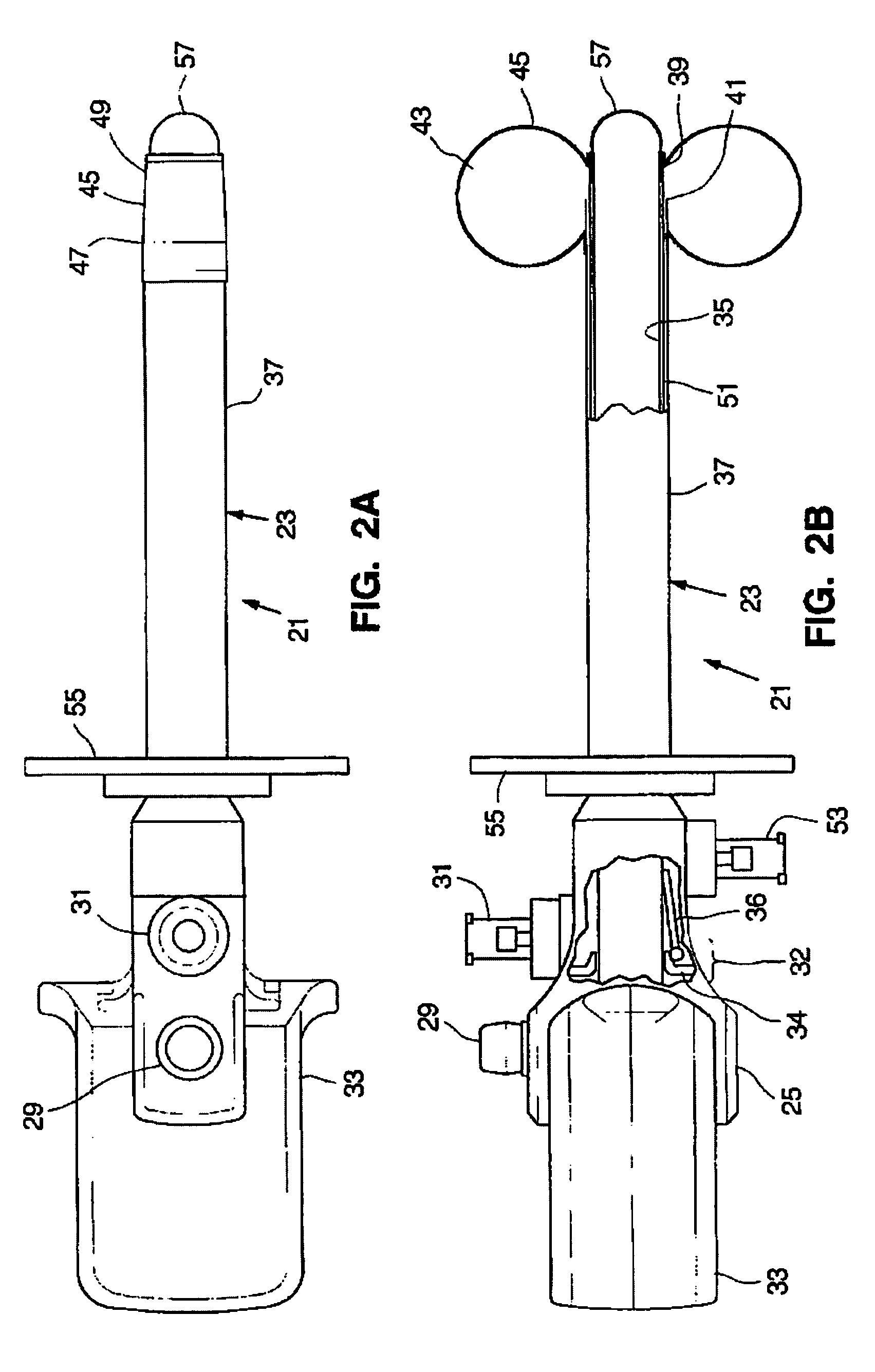Method and inflatable chamber apparatus for separating layers of tissue
a tissue separation and retraction device technology, applied in the field of inflatable tissue separation and retraction devices, can solve the problems of irritating the bowel, difficult to see the site of the hernia, and risk of puncturing the peritoneum
- Summary
- Abstract
- Description
- Claims
- Application Information
AI Technical Summary
Benefits of technology
Problems solved by technology
Method used
Image
Examples
second embodiment
[0190]In a one-component apparatus according to U.S. Ser. No. 07 / 911,714, the introducing device is an outer elongated tube, and the insufflating device comprises an inner elongated tube mounted in the bore of the outer tube. The proximal ends of the tubes are flexibly coupled together. One end of the main envelope is everted with respect to the other, and is attached to the distal end of the outer elongated tube. The other end of the main envelope is attached to the distal end of the inner elongated tube. The main inflatable chamber defined by the main envelope is thus substantially toroidal. The outer elongated tube has an anchor flange slidably mounted on it. The anchor flange and the main inflatable chamber together form a gas-tight seal with the second layer of tissue.
[0191]Such second embodiment of a one-component apparatus is shown in FIGS. 7A-7B and 8A-8B. In this embodiment, a substantially toroidal shape of the main chamber avoids the need to detach and remove the main env...
PUM
 Login to View More
Login to View More Abstract
Description
Claims
Application Information
 Login to View More
Login to View More - R&D
- Intellectual Property
- Life Sciences
- Materials
- Tech Scout
- Unparalleled Data Quality
- Higher Quality Content
- 60% Fewer Hallucinations
Browse by: Latest US Patents, China's latest patents, Technical Efficacy Thesaurus, Application Domain, Technology Topic, Popular Technical Reports.
© 2025 PatSnap. All rights reserved.Legal|Privacy policy|Modern Slavery Act Transparency Statement|Sitemap|About US| Contact US: help@patsnap.com



